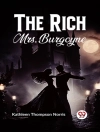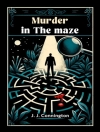Matthew Gregory Lewis’s ‘Mistrust, or Blanche and Osbright’ is a Gothic novel that delves into themes of mistrust, betrayal, and deception. Set in the tumultuous and morally ambiguous world of 18th-century England, the novel’s intricate plot follows the intertwined lives of its two main characters, Blanche and Osbright, as they navigate a treacherous web of secrets and lies. Lewis’s literary style is characterized by vivid imagery, emotional depth, and a keen sense of atmosphere, all of which contribute to the book’s haunting and suspenseful narrative. Drawing on the Gothic tradition of the time, ‘Mistrust’ explores the darker aspects of human nature and the consequences of unchecked suspicion and jealousy. Matthew Gregory Lewis, known for his influential works in the Gothic genre, brings his unique perspective and storytelling skills to this captivating tale of intrigue and moral ambiguity. With its complex characters and gripping storyline, ‘Mistrust, or Blanche and Osbright’ is a must-read for fans of Gothic literature and those interested in exploring the darker side of human emotions.
Circa l’autore
Matthew Gregory Lewis, perhaps best known for his hallmark Gothic novel, ‘The Monk’ (1796), was an English novelist and dramatist born on July 9, 1775, in London. Lewis carved a niche in the literary realm with his flair for amalgamating horror, romance, and supernatural elements, which was somewhat controversial at the time yet undeniably influential in shaping Gothic fiction. His foray into literature was partly due to his time at Christ Church, Oxford, where the seeds of his literary career were sown. ‘Mistrust, or Blanche and Osbright’ is one of the lesser-known works by Lewis, a tale imbued with characteristic Gothic motifs and intrigue. Though it did not achieve the fame of ‘The Monk, ‘ this work contributes to the deeper understanding of Lewis’s literary style and thematic preoccupations. Lewis’s contribution to the Gothic genre often reflected a preoccupation with the macabre and the taboo, which both shocked and attracted the readers of his time. His narrative techniques, incorporating vivid descriptions and direct appeals to the reader’s senses, set a precedent for future generations of Gothic writers. Unfortunately, Lewis’s career was cut short when he died on May 16, 1818, at sea while en route to England from the West Indies. Lewis’s work continues to be studied and appreciated for its innovation and influence on the evolution of Gothic literature.












